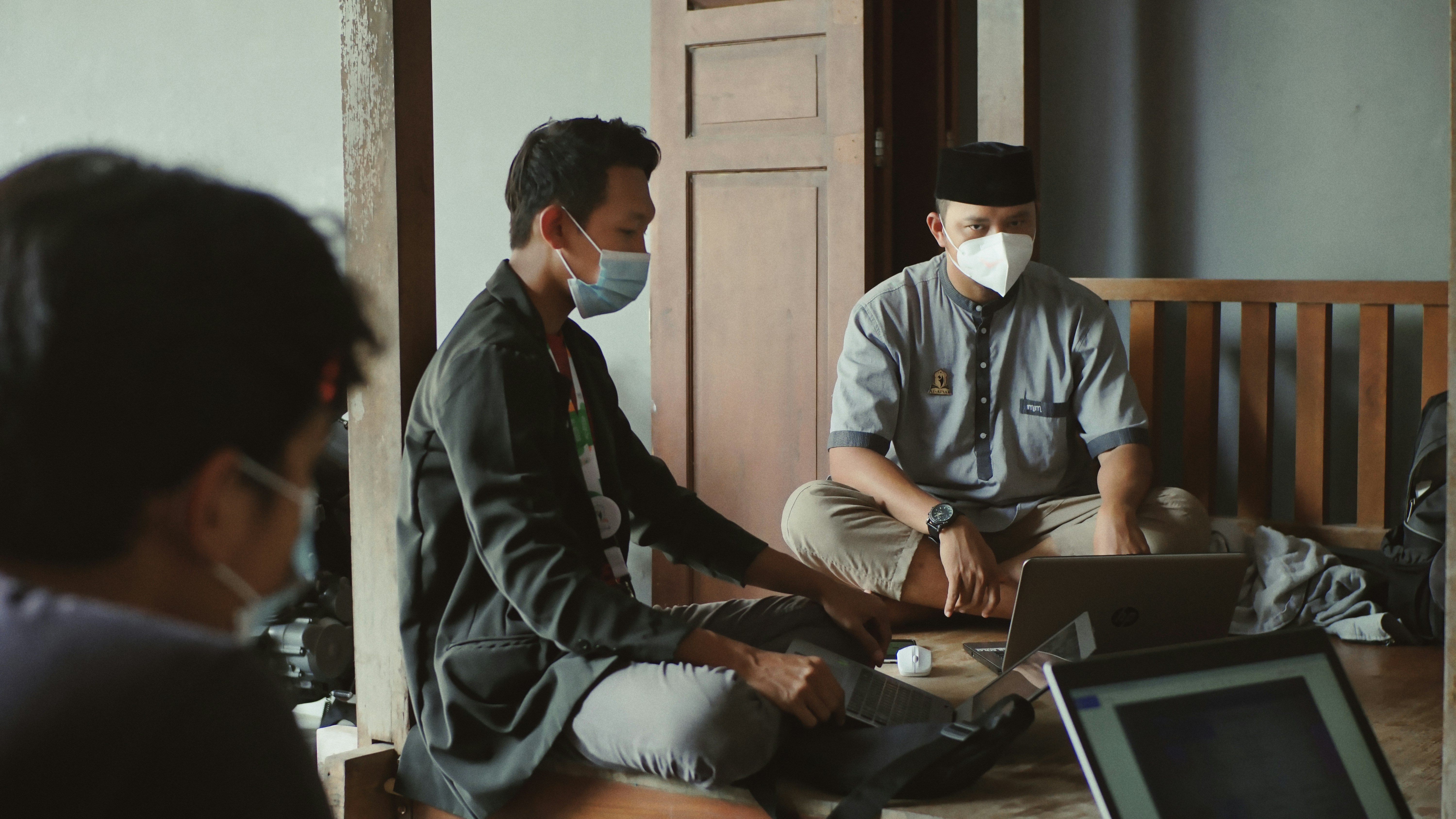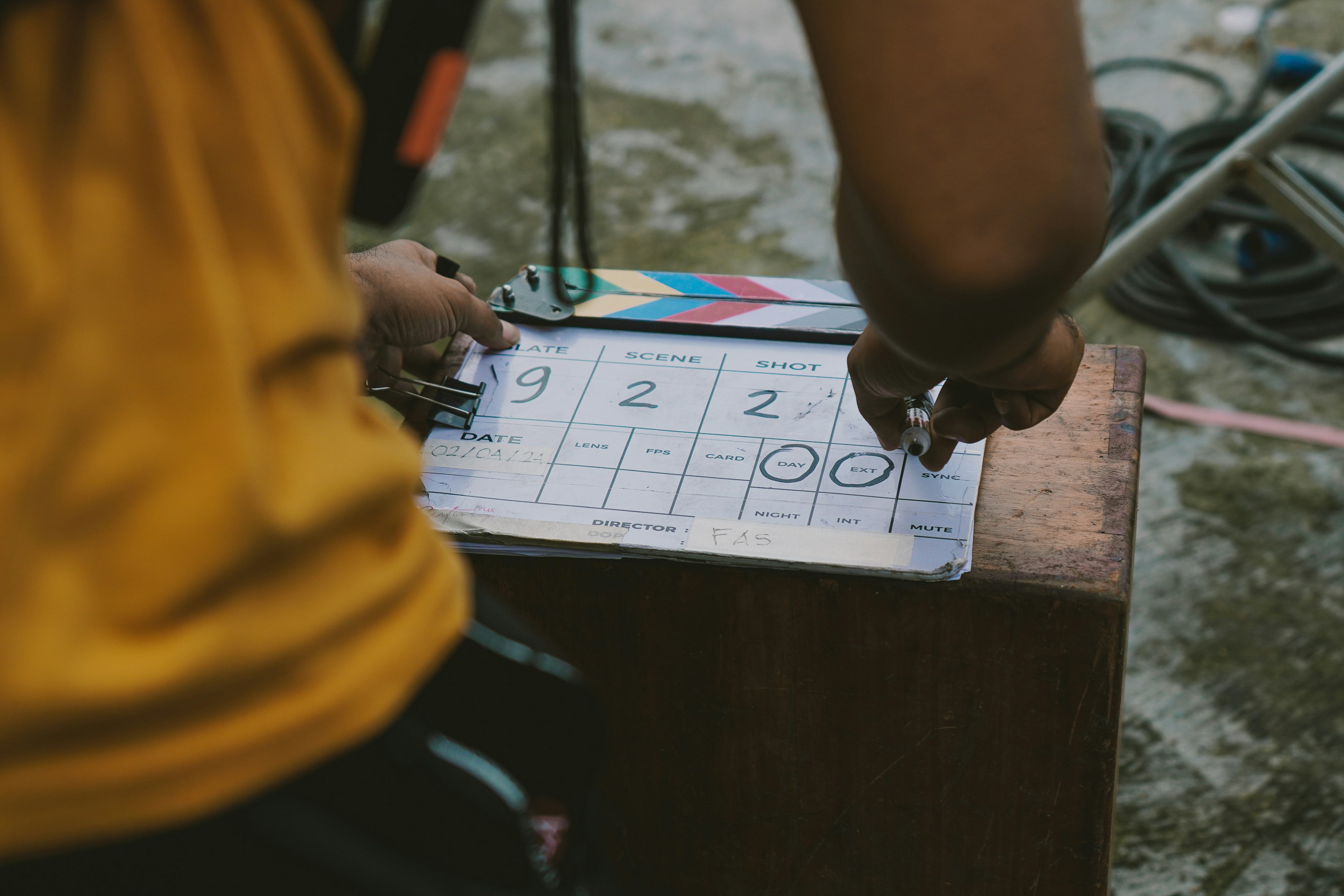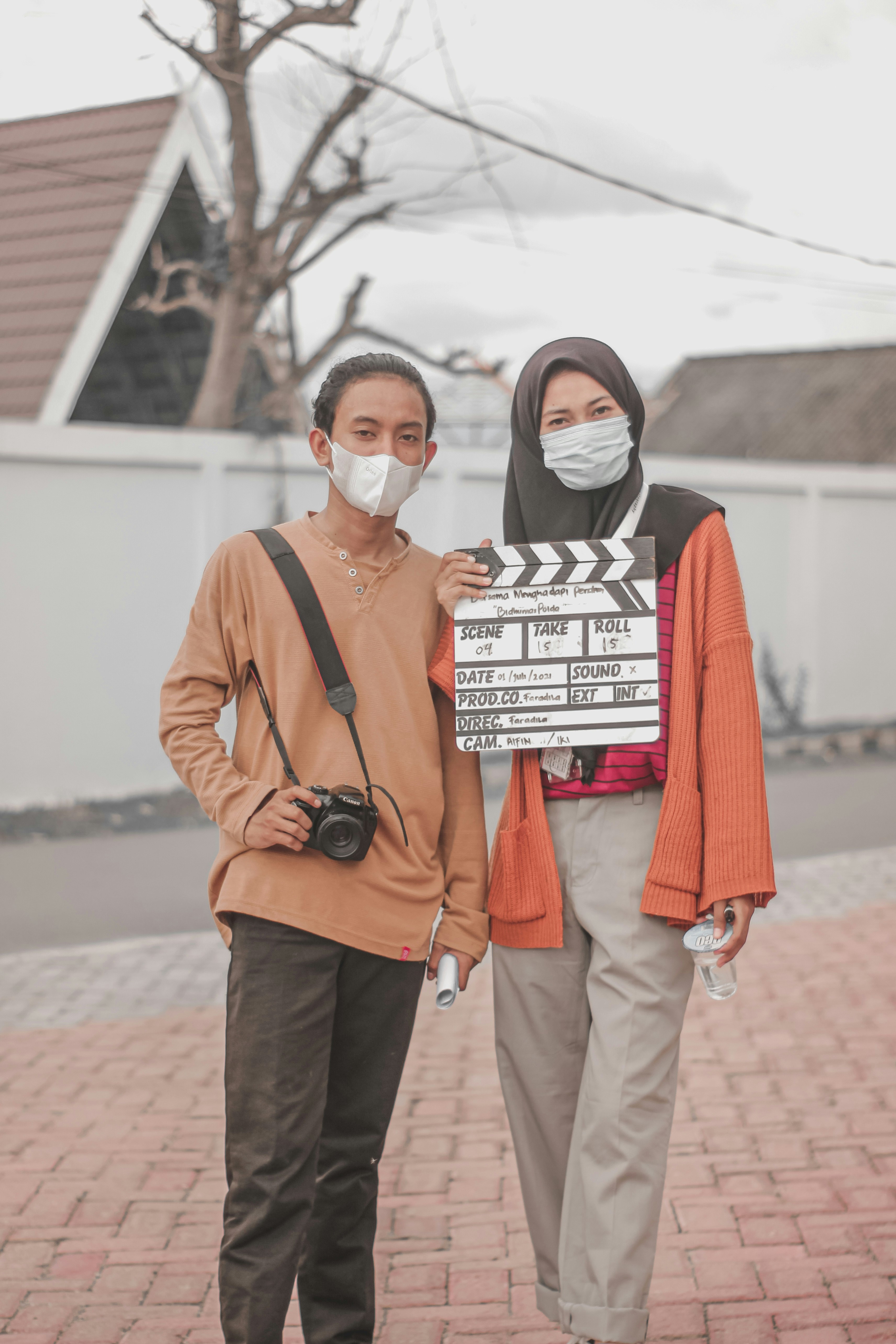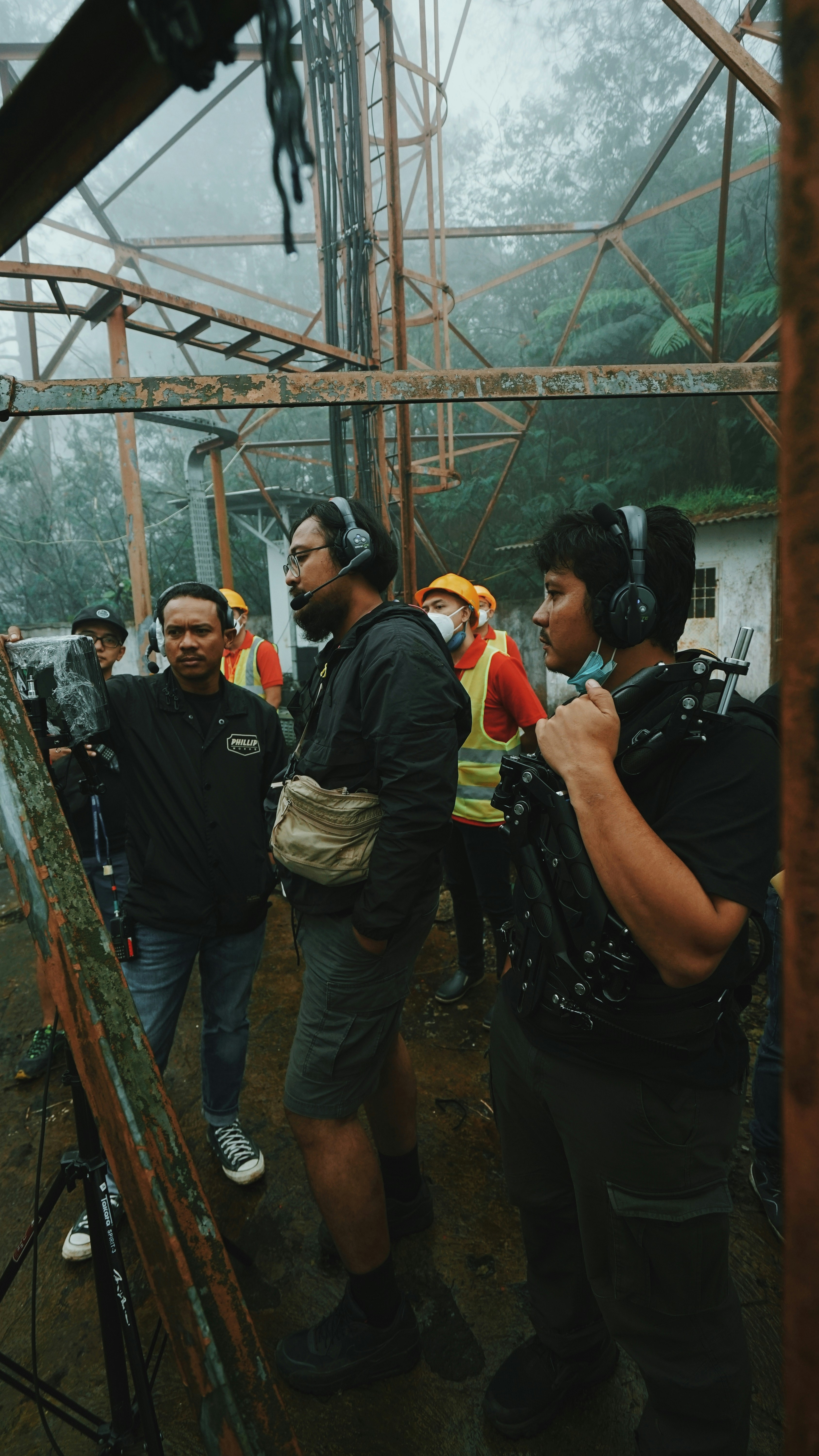Indonesia's Film Industry Adopts AI for Budget Filmmaking

AI-generated Indonesian culture art. Licensed for use: StableDiffusion3.net
Share this post:
Indonesia's Film Industry Adopts AI for Budget Filmmaking
Indonesia's film industry is going through a transformation. Filmmakers across the archipelago are using AI tools like Sora, Runway, Midjourney, and ChatGPT to create ambitious films that look expensive but cost a fraction of traditional productions. The shift is happening fast, and the results are mixed.
The numbers tell part of the story. Indonesian films typically budget around 10 billion rupiah, which converts to roughly $602,500. That's less than 1% of what a major Hollywood production costs. With AI tools, filmmakers are stretching those budgets even further while aiming for visual quality that approaches big studio standards.
"Indonesia is now at the tipping point as we've got all the access to AI," Bisma Fabio Santabudi, a film and animation lecturer at Multimedia Nusantara University, told Rest of World. "Sora 2 can unlock broader potential for Indonesia's creative workers to experiment more extensively without being constrained by high costs."
But there's another side. Storyboarders, scriptwriters, and visual effects artists are losing jobs to these same tools. The industry is changing, and not everyone is benefiting equally.
A Growing Market Meets New Technology
Indonesia has a thriving film and animation sector. Local box office sales exceeded $400 million in 2023, making it the fastest growing market in Southeast Asia. About 40,000 people worked in the sector as of 2020, serving both Hollywood productions and a growing domestic industry.
Netflix has invested in local content to reach Indonesian audiences. Local films are starting to outpace Hollywood imports at the domestic box office. The industry has momentum, and AI arrived at exactly the moment when filmmakers were looking for ways to scale up production quality without proportional budget increases.

The Indonesian Film Producer Association supports AI adoption. Chairperson Agung Sentausa sees it as a path to compete with Hollywood production values. "Our film industry is open to convenience offered by AI," he said.
How Filmmakers Are Using AI Right Now
Indonesian creatives use different AI tools for specific parts of production. The adoption is practical rather than experimental. These are working professionals trying to deliver projects on time and budget.
ChatGPT handles scripting tasks. Writers use it to brainstorm, structure ideas, and catch typos. Bayu Kurnia Prasetya, a scriptwriter, now finishes in five minutes what used to take five hours. But he draws a line. "I would not use AI to write because it lacks the human touch," he said. "[AI films] have no soul at all. They are just too perfect."
Midjourney produces images for concept work and visual development. Storyboard artist Bahrul Ilmi uses it to draw characters in various positions and angles. Sometimes the results don't make sense and he can't use them, but when they work, they save substantial time.
Runway generates short videos for storyboarding and editing. Sora 2, which launched October 2025, takes this further with realistic clips up to a minute long with synchronized sound. These outputs work for storyboarding and preproduction, giving directors and cinematographers a better sense of how scenes will look before committing to full production.

Visual Effects: Where AI Has the Biggest Impact
VFX work is changing fastest. The tasks are often labor intensive, rules based, and repetitive, making them vulnerable to automation.
Amilio Garcia Leonard, a VFX artist working on Hollywood productions, started using AI tools a few months ago. He creates draft versions of final visual effects edits that take 70% less time than traditional methods. "We should not avoid AI. We befriend AI to maximize our basic skills, to speed up and augment our work," he said.
Maximillian Budihardjo, a VFX artist at Visualizm, a Jakarta post production studio, uses AI for first edits and then touches up the results. "AI tools are a companion, an assistant to improve my workflow," he explained. "I don't want to use AI 100% in my work."
That's partly pragmatic. Many filmmakers still consider AI use taboo. The outputs sometimes look wrong in ways that are easy to spot. Character skin appears too perfect, lacking pores or natural texture. These tells signal AI generation to trained eyes.
Ignatius Krismawan, another VFX artist, has reduced hiring roto artists who cut objects out of movie frames. AI handles this work efficiently now. The job still exists but requires fewer people.
Jobs Lost, Jobs Changed, Jobs Created
The transition is displacing workers. Studios are hiring fewer storyboarders. Production houses need fewer roto artists. Voice talent gets replaced by AI samples from databases. About 204,000 entertainment jobs in Hollywood will likely be disrupted by generative AI by 2026, according to estimates from the Concept Art Association and the Animation Guild.
Indonesia faces similar pressures with less financial cushion. Most Indonesian film workers don't have the resources to weather long periods between jobs while the industry restructures.
Wiendy Widasari, a producer at production house Progressinema, noted that advances in AI image and video generation mean studios hire fewer storyboarders. The work hasn't disappeared, but the volume required has dropped.
Audio post production studios have stopped hiring voice talent, instead using samples they've stored in databases. "We then generate [with AI] how deep or light the voice is," Krismawan explained. "But we must pay [the artists] for the timbre of the voice needed." This arrangement preserves some compensation but eliminates ongoing work.
At the same time, new roles are emerging. Santabudi's university now offers two courses in AI filmmaking. The demand for AI prompt artistry is growing. Someone needs to know how to communicate effectively with these tools to get usable results. That's a learnable skill, but it's different from traditional filmmaking craft.
Storyboarder Bahrul Ilmi, working since the early 2000s, is planning to upskill. He's optimistic about the long term. "I believe that AI content made instantly and used by many people will reach a saturation point," he said. "That's when manual work will have more value than AI."

The Budget Advantage: Making Hollywood Style Films Cheap
The financial transformation is substantial. Traditional Hollywood animated features like Toy Story 3 took four years and an estimated $200 million to produce. The AI assisted animated film Critterz, scheduled for release in May 2026, has a $30 million budget and nine month timeline.
Indonesian filmmakers are operating at even lower budgets. The average Indonesian film costs about 10 billion rupiah ($602,500). With AI tools reducing costs for VFX, storyboarding, and preproduction, that budget stretches much further.
Franklin Darmadi, CEO of Wokcop Studio and a movie director, is using AI to shoot more ambitious action sequences. "Just months ago, these scenes would've been difficult to realize on limited budgets," he told Rest of World.
This enables Indonesian filmmakers to compete with international productions in visual ambition if not total polish. A domestic action film can now include sequences that look expensive without the corresponding cost. That changes what stories filmmakers feel comfortable attempting.
The quality gap between Indonesian films and Hollywood productions should narrow as AI tools improve. The question is whether Indonesian productions can maintain their distinctive voice and cultural identity while adopting these tools, or whether everything starts looking similar because everyone uses the same generation models.
Early AI Films Coming Out of Indonesia
Indonesian filmmakers aren't just talking about AI. They're producing work.
The short film Nusantara won best documentary at a European AI film showcase in 2025. Using AI, the film depicts epic battles fought by a legendary military leader in 14th century Indonesia. This kind of historical recreation would be prohibitively expensive with traditional methods.
The first Bali AI International Festival was held in 2025 with 25 submissions from around the world. Festival organizer Ben Makinen, an American filmmaker, held a second iteration just months later with 86 submissions. The rapid increase in entries shows how quickly the field is developing.

"AI filmmakers are challenged to learn," Makinen said. "They still have to see what makes a good director, what makes a good editor." The best AI filmmakers are still traditionally trained, he noted. The tools don't replace understanding of story, pacing, composition, or emotional resonance.
AI productions are hitting screens globally. Marvel Studios used AI for the opening credits of Secret Invasion. VFX artists for Netflix's The Eternaut used AI to create footage of a building collapse. These mainstream uses normalize AI in filmmaking pipelines.
The Controversy Around AI Actors and Voice Cloning
Using AI to replace human performers remains controversial worldwide, and Indonesia is no exception.
AI production company Particle6 recently created an AI actor named Tilly Norwood, generating criticism across the industry. The Screen Actors Guild stated she was "trained on the work of countless professional performers without permission or compensation."
Voice actors face similar threats. Tech companies have created AI voice clones, prompting lawsuits from voice over artists alleging their voices were stolen.
The practice is less controversial in Indonesia, where regulations are lighter and industry standards different. Audio post production studios use voice samples from databases to generate variations. Artists receive payment for the timbre of their voice but lose ongoing work opportunities.
This creates a complicated situation. Artists get some compensation, but their voices can be used indefinitely without additional payment. The power dynamic favors studios that control the databases and AI tools.
What Makes This Different: Cultural Context
Indonesia's embrace of AI filmmaking reflects specific local conditions. The industry is younger and more flexible than Hollywood. There's less institutional resistance and fewer established unions to negotiate terms.
The budget constraints are real. Indonesian filmmakers have always worked with limited resources, finding creative solutions to technical limitations. AI tools fit naturally into this problem solving culture.
The market is growing rapidly, creating demand for more content than traditional production methods can supply. AI helps fill that gap without proportional increases in workforce or infrastructure.
There's also less baggage around AI ethics and training data. While Hollywood debates what content was used to train models and who deserves compensation, Indonesian filmmakers focus on what the tools can do right now. This pragmatic approach accelerates adoption but may create problems later when questions about rights and compensation become unavoidable.
The Training Data Question
Sora 2 and similar models were likely trained on movies, TV shows, and other copyrighted material, according to investigations by outlets like The Washington Post. This raises questions about whether AI companies have the right to use this content and whether original creators deserve compensation.
Indonesian filmmakers interviewed for this article didn't express much concern about training data ethics. The focus is on practical application rather than systemic questions about how these tools should exist.
That may change as the industry matures and Indonesian filmmakers see their work potentially used to train future AI models without permission or payment. For now, the emphasis is on using available tools to compete in a global market.
The Human Touch Debate
Multiple Indonesian filmmakers expressed similar sentiments about AI's limitations. The tools can generate technically proficient content, but something is missing.
"Film is an art," scriptwriter Bayu Kurnia Prasetya said. "It should have the raw side, emotions expressed by a human being."
VFX artist Maximillian Budihardjo noted that many filmmakers consider AI use taboo. The perception is that AI generated content lacks authenticity, that it's too clean and perfect to feel human.
This creates a tension. The industry is adopting AI for practical reasons, but there's simultaneous worry about losing what makes Indonesian films distinctive. The cultural specificity, emotional rawness, and imperfect humanity that define good storytelling might get smoothed away if AI becomes too dominant in the production process.

What Happens Next
The Indonesian film industry is moving faster than regulations or industry standards can keep up. AI adoption is happening organically, driven by individual filmmakers and studios making pragmatic decisions about budgets and timelines.
This creates uncertainty. Workers don't know which jobs will survive and which will disappear. Filmmakers don't know whether audiences will accept AI heavy productions. Studios don't know whether the cost savings will translate to profitable films or just cheaper looking content that doesn't perform.
Universities are adding AI filmmaking courses, trying to prepare students for an industry that's changing month by month. That's reactive rather than strategic, but it's something.
The optimists believe AI will democratize filmmaking, allowing more voices to tell stories that couldn't be told before. The pessimists see a race to the bottom where everyone produces AI generated content that looks similar and lacks soul.
The reality will probably land somewhere in between. Some jobs will disappear. New jobs will emerge. Some films will use AI thoughtfully to tell better stories. Others will use it as a cheap shortcut and produce forgettable content.
Indonesia's experience matters beyond its borders. As a rapidly growing market with fewer institutional barriers to AI adoption, it's a preview of how other film industries might evolve. The successes and failures happening in Jakarta studios and Bali festivals will inform decisions made in Hollywood, Bollywood, and everywhere else filmmakers work.
The Practical Reality
Indonesian filmmakers are learning what AI can and can't do through direct experience. The tools are powerful but imperfect. They work well for some tasks and poorly for others. They save time on technical work but can't replace creative judgment.
VFX artists find AI most useful for first drafts that still require human refinement. Scriptwriters use it for structure and typos but not actual storytelling. Storyboard artists generate character poses but discard nonsensical results.
The pattern is consistent. AI augments human work rather than replacing it entirely. The question is whether that augmentation reduces the number of humans needed, or whether it just makes the remaining humans more productive.
So far, the answer appears to be both. Fewer people do more work, which is good for budgets and bad for employment. The industry is producing more content with fewer workers. That's economically rational but socially complicated.
Looking at the Numbers
About 40,000 Indonesians worked in film and animation as of 2020. That number was growing steadily with the expanding domestic market and increasing Hollywood outsourcing. AI adoption will likely flatten or reduce that growth.
Local box office sales exceeded $400 million in 2023. If AI enables more productions at lower costs, that revenue might get distributed across more films rather than concentrated in fewer big budget releases. That could be good for diversity of content but challenging for individual project profitability.
The average Indonesian film budget is $602,500. If AI reduces that to $400,000 while maintaining comparable quality, studios can produce more films with the same capital. Whether audiences want more films or just better films remains unclear.
These numbers matter because they represent people's livelihoods and an industry's structure. The economic changes driven by AI aren't abstract. They directly affect whether someone can support their family through filmmaking work.
The Global Context
Indonesia isn't alone. Film industries worldwide are grappling with AI adoption. Hollywood faces the same questions but with different economic pressures, stronger unions, and more established regulatory frameworks.
The Indonesian experience offers a preview of what happens when AI adoption proceeds quickly with minimal institutional resistance. The results are a mix of opportunity and disruption, innovation and job loss, excitement and anxiety.
Other developing film markets will watch Indonesia closely. If AI enables Indonesian films to compete effectively with Hollywood productions, other countries will accelerate their own AI adoption. If the quality suffers or audiences reject AI heavy content, the industry will pull back.
The next few years will determine whether Indonesia's current approach succeeds or needs correction. The filmmakers working through these changes right now are writing the playbook others will follow.
Key Takeaways
Indonesian filmmakers are using AI tools like Sora, Runway, Midjourney, and ChatGPT to reduce costs and increase production ambition. The typical Indonesian film budget of $602,500 stretches much further with AI handling VFX, storyboarding, and preproduction tasks.
Jobs are being lost in visual effects, storyboarding, and voice acting as AI automates labor intensive work. New roles requiring AI prompt artistry are emerging, but the transition is displacing workers.
The Indonesian Film Producer Association supports AI adoption as a path to Hollywood level production values. Universities are adding AI filmmaking courses to prepare students for the changing industry.
Cultural concerns remain. Filmmakers worry that AI generated content lacks soul and emotional authenticity, even as they use the tools for practical reasons.
Indonesia's rapid AI adoption offers a preview of how other film industries might evolve. The experience combines genuine opportunity with real disruption, affecting thousands of workers navigating an industry in transition.
Sources and Additional Reading
Rest of World: Indonesia's Film Industry Embraces AI to Make Hollywood Style Movies for Cheap
The Edge Malaysia: Indonesia Embraces AI for Filmmaking
Variety: JAFF Market Partners with Cinepoint to Track Indonesia's Box Office Surge
The Diplomat: Indonesian Cinema Booms as Industry Expands Beyond Classic Horror Formula
Deadline: Indonesian Filmmakers Talk Netherlands Partnerships and Industry's Future
Wikipedia: Cinema of Indonesia
Jakarta Film Studios Official Site
Animation World Network: Animation Guild Shares Generative AI Economic Impact Study Results



